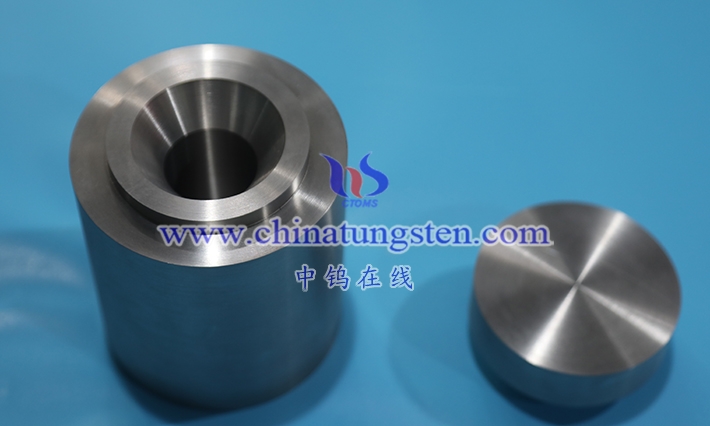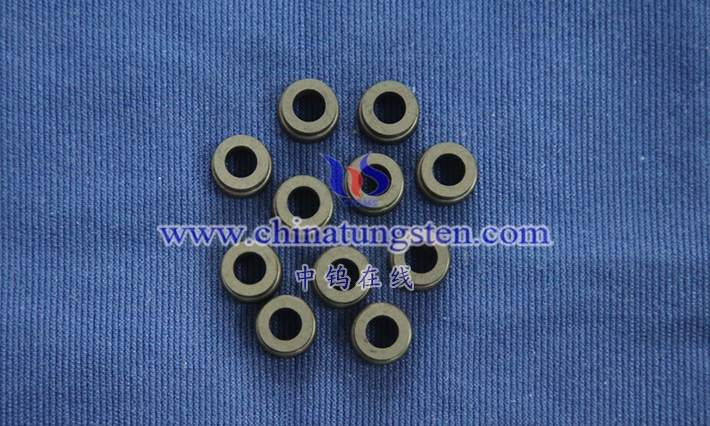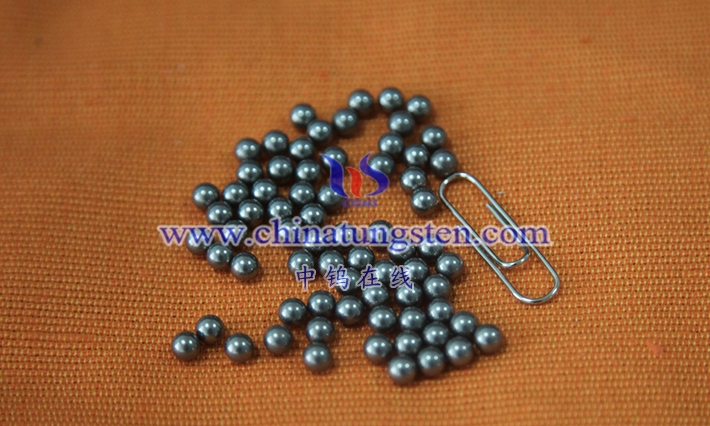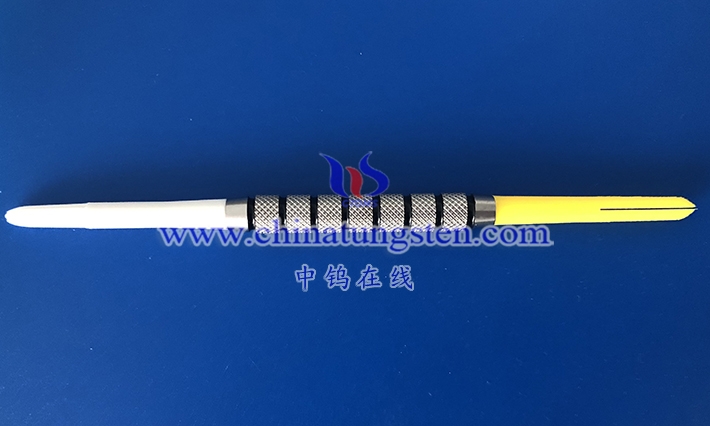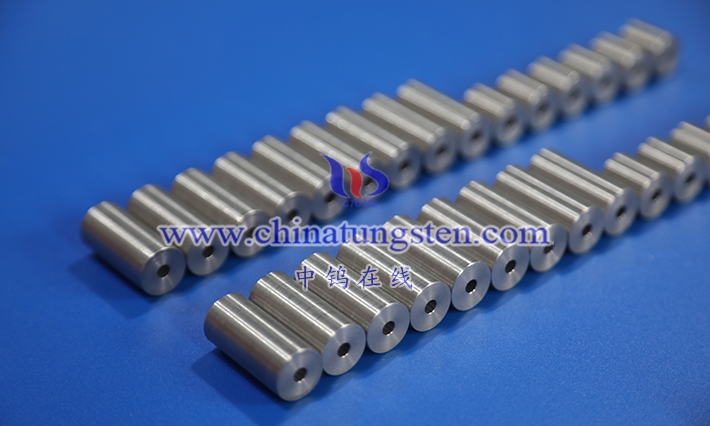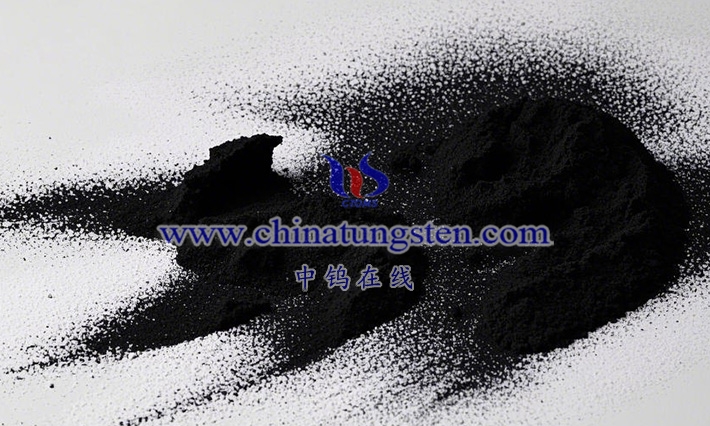
Chapter 1 Introduction
1.1 Overview of tungsten disulfide
Tungsten disulfide (WS₂) is a layered transition metal disulfide (TMDs) composed of the elements tungsten (W) and sulfur (S) with the chemical formula WS₂, which belongs to the hexagonal crystal structure. Due to its unique physical and chemical properties, tungsten disulfide has a wide range of applications in materials science, energy storage, catalysts and lubrication. Its structure is similar to graphite, consisting of a layer of tungsten atoms sandwiched between two layers of sulfur atoms, connected into a layered stack by van der Waals forces. This structure gives tungsten disulfide excellent mechanical properties and chemical stability, allowing it to remain functional under extreme conditions. Compared with Molybdenum’s sulfide MoS₂, tungsten disulfide has higher thermal stability and oxidation resistance, which makes it advantageous for applications in high-temperature environments.
The discovery of tungsten disulfide dates back to the 19th century, but it was not until the late 20th century, with the development of nanotechnology, that the potential of its nanoforms (such as nanoparticles, nanosheets, and nanotubes) was fully explored. In nature, tungsten disulfide is mainly found in ore form, such as associated with wolframite or scheelite, but it is usually prepared industrially by chemical vapor deposition (CVD) or thermal decomposition from the reaction of tungsten powder with sulfide. The semiconductor properties of tungsten disulfide make it excellent in electronic devices, and its bandgap varies with the number of layers (about 2.1 eV for a single layer and 1.3 eV for multiple layers), which provides flexibility in optoelectronic device design. In addition, its low coefficient of friction and high resistance to extreme pressure make it ideal for solid lubricants in a wide range of applications in the aerospace and mechanical industries.
Globally, the research and industrialization of tungsten disulfide is accelerating. Tungsten disulfide is not only a functional material, but also reveals its potential in the fields of catalysis, energy storage and thermopower.
1.2 Purpose and significance of the study
The purpose of tungsten disulfide research is to explore its physical, chemical and application properties in order to optimize its properties and expand its application range in high-tech fields. With the increasing global demand for high-efficiency energy, environmentally friendly materials and intelligent manufacturing, tungsten disulfide has become a research hotspot due to its versatility. For example, its potential as a solid lubricant can reduce mechanical wear and extend equipment life; Its semiconductor properties can be used to develop new types of photodetectors and sensors; Its catalytic performance is of great significance in green chemistry. The ultimate goal of this research is to achieve the optimal performance solution by manipulating the structure, morphology and doping state of tungsten disulfide, and provide theoretical support and technical guidance for industrial applications.
The significance of tungsten disulfide research is reflected in many levels. First of all, in the energy field, tungsten disulfide can be used as an electrode material for lithium-ion batteries or supercapacitors, and its high specific surface area and fast electron transport ability significantly improve energy storage efficiency. Secondly, in the environmental field, the photocatalytic performance of tungsten disulfide can be used for hydrogen production or pollutant degradation by water splitting, helping to achieve the goal of carbon neutrality. In addition, its stability in high-temperature and high-pressure environments makes it a candidate for aerospace materials, such as improved wear resistance when compounded with tungsten copper. The study has also revealed the potential of tungsten disulfide in biomedicine, for example as a drug delivery vehicle or imaging agent.
From an economic point of view, the industrialization of tungsten disulfide can promote the development of the tungsten market. According to tungsten price data, its high value-added applications will bring significant benefits to related companies. From a scientific point of view, the research of tungsten disulfide has deepened people’s understanding of two-dimensional materials and promoted the cutting-edge progress of tungsten in the academic field.
directory
Chapter 1 Introduction
1.1 Overview of tungsten disulfide
1.2 Purpose and significance of the study
Chapter 2 Basic properties of tungsten disulfide
2.1 Appearance
2.2 Density
2.3 Solubility
2.4 Lubrication
2.5 Coefficient of friction
2.6 Resistance to extreme pressure
2.7 Antioxidant properties
2.8 Semiconductor performance
2.9 Anti-magnetic properties
2.10 Thermal stability
2.11 Electrical Performance
2.12 Optical Performance
2.13 Mechanical Properties
2.14 Energy storage performance
2.15 Thermoelectric properties
2.16 Catalytic performance
Chapter 3 Factors affecting the properties of tungsten disulfide
3.1 Effect of purity on WS2 performance
3.1.1 Effect of purity on WS2 stability
3.2 Effect of impurity elements on WS2 performance
3.2.1 Effect of oxygen on WS2 performance
3.2.2 Effect of carbon on WS2 performance
3.2.3 Effect of hydrogen on WS2 performance
3.2.4 Effect of phosphorus on WS2 performance
3.2.5 Effect of iron on WS2 properties
3.2.6 Effect of cadmium on WS2 performance
3.2.7 Effect of copper on WS2 properties
3.2.8 Effect of molybdenum on WS2 performance
3.3 Effect of particle size on WS2 performance
3.3.1 Effect of particle size on the specific surface area of WS2
3.3.2 Effect of particle size on the sintering properties of WS2
3.3.3 Effect of particle size on mechanical properties of WS2
3.4 Effect of particle size distribution on WS2 performance
3.4.1 Effect of particle size distribution on WS2 fluidity
3.4.2 Effect of particle size distribution on WS2 filling and pressing uniformity
3.4.3 Effect of particle size distribution on the compactness and strength of WS2
3.4.4 Effect of particle size distribution on the compactness and strength of WS2
3.4.5 Effect of particle size distribution on WS2 intensity
3.5 Effect of topography on WS2 performance
3.5.1 Effect of nanoparticles on WS2 performance
3.5.2 Effect of nanosheets on WS2 performance
3.5.3 Effect of nanotubes on WS2 performance
3.5.4 Effect of floral structure on WS2 performance
3.5.5 Effect of spherical structure on WS2 performance
3.6 Effect of preparation method on the performance of WS2
3.6.1 Effect of different methods on WS2 performance
3.6.2 Effect of preparation parameters on WS2 performance
3.6.2.1 Effect of reaction temperature on WS2 performance
3.6.2.2 Effect of reaction time on WS2 performance
3.6.2.3 Effect of reactant concentration on WS2 performance
3.6.2.1 Effect of reaction atmosphere on WS2 performance
3.7 Effect of crystal structure on WS2 performance
3.8 Effect of defects on WS2 performance
3.9 Effect of surface modification on WS2 performance
3.10 Effect of doping on WS2 performance
3.11 Effect of Composite on WS2 Performance
3.12 Effect of the working environment on WS2 performance
Chapter 4 Interaction between tungsten disulfide properties and influencing factors
4.1 Effect of the number of layers on the electrical mechanics of WS2
4.2 Effect of the number of layers on the optical performance of WS2
4.3 Effect of preparation process on the mechanical properties of WS2
4.4 Effect of preparation process on WS2 energy storage performance
4.5 Effect of doping and compounding on WS2 catalysis
4.6 Effect of doping and recombination on the thermoelectric properties of WS2
4.7 Effect of environmental conditions on WS2 performance stability
Chapter 5 Improvement of tungsten disulfide properties
5.1 Improved performance through purity improvement
5.1.1 Optimization of purification process of high-purity tungsten disulfide
5.1.2 Correlation between purity and performance stability
5.2 Improvement of performance by impurity element regulation
5.2.1 Doping strategies and performance changes of specific impurity elements
5.2.2 Methods for inhibition of impurity elements and removal of harmful impurities
5.3 Optimization of particle size and particle size distribution
5.3.1 Particle size control technology and specific surface area maximization
5.3.2 Homogenization of particle size distribution improves comprehensive performance
5.4 Topography design to improve performance
5.4.1 Precise preparation of nanostructure topography
5.4.2 Performance benefits of different topography in specific applications
5.5 Preparation method innovation to improve performance
5.5.1 Breakthrough in the principle and performance of new preparation process
5.5.2 Fine adjustment and performance optimization of preparation parameters
5.6 Crystal Structure and Defect Engineering
5.6.1 Crystal structure control and performance-oriented optimization
5.6.2 Defect introduction and repair have a dual impact on performance
5.7 Surface Modification and Functionalization
5.7.1 Synergistic enhancement of surface finishing technology and performance
5.7.2 Functional surface design to meet the needs of diverse applications
5.8 Doping and Compounding Strategies
5.8.1 Construction and performance improvement of multivariate doping system
5.8.2 Composite structure design and synergistic performance optimization
Chapter 6 Future Prospects and Challenges of Tungsten Disulfide Research
6.1 Basic Research Directions
6.1.1 Exploration of the relationship between atomic-scale structure and performance
6.1.2 Performance change study under extreme conditions
6.2 Preparation technology optimization
6.2.1 Development of efficient and green preparation process
6.2.2 Exploration of new preparation technologies
6.3 Application Expansion and Performance Improvement
6.3.3 Exploration of potential applications in emerging fields
6.3.4 Existing Application Performance Improvement Targets
Read the full text:Tungsten Disulfide Properties and Influencing Factors
Customized R&D and Production of Tungsten, Molybdenum Products
Chinatungsten Online and CTIA GROUP LTD have been working in the tungsten industry for nearly 30 years, specializing in flexible customization of tungsten and molybdenum products worldwide, which are tungsten and molybdenum design, R&D, production, and overall solution integrators with high visibility and credibility worldwide.
Chinatungsten Online and CTIA GROUP LTD provide products mainly including: tungsten oxide products, such as tungstates such as APT/WO3; tungsten powder and tungsten carbide powder; tungsten metal products such as tungsten wire, tungsten ball, tungsten bar, tungsten electrode, etc.; high-density alloy products, such as dart rods, fishing sinkers, automotive tungsten crankshaft counterweights, mobile phones, clocks and watches, tungsten alloy shielding materials for radioactive medical equipment, etc.; tungsten silver and tungsten copper products for electronic appliances. Cemented carbide products include cutting tools such as cutting, grinding, milling, drilling, planing, wear-resistant parts, nozzles, spheres, anti-skid spikes, molds, structural parts, seals, bearings, high-pressure and high-temperature resistant cavities, top hammers, and other standard and customized high-hardness, high-strength, strong acid and alkali resistant high-performance products. Molybdenum products include molybdenum oxide, molybdenum powder, molybdenum and alloy sintering materials, molybdenum crucibles, molybdenum boats, TZM, TZC, molybdenum wires, molybdenum heating belts, molybdenum spouts, molybdenum copper, molybdenum tungsten alloys, molybdenum sputtering targets, sapphire single crystal furnace components, etc.
For more information about tungsten disulfide please visit the website: tungsten-disulfide.com
If you are interested in related products, please contact us:
Email: sales@chinatungsten.com|
Tel: +86 592 5129696 / 86 592 5129595
